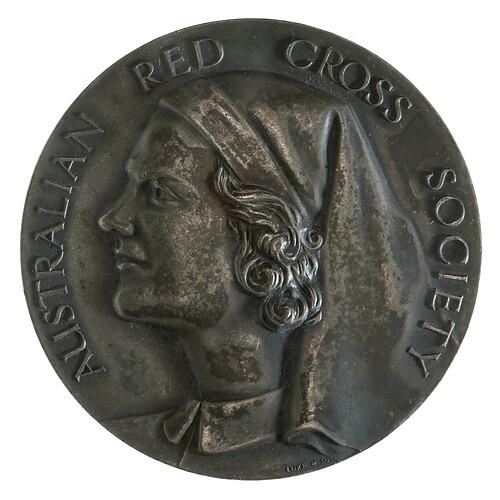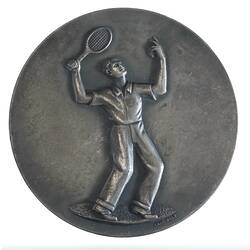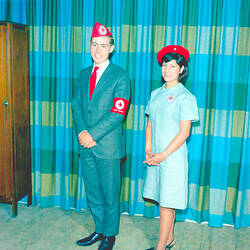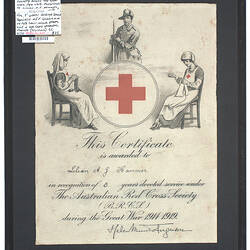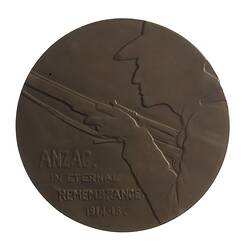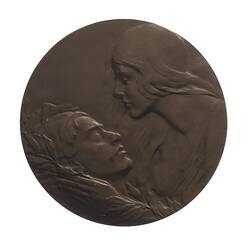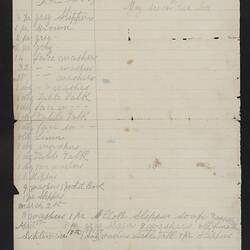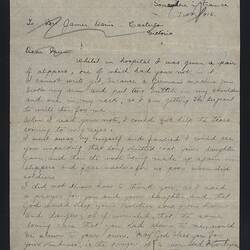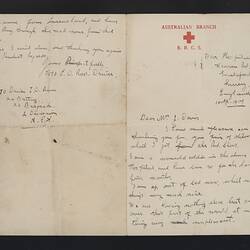The International Committee of the Red Cross was formed in 1863 and is the founding body of the Red Cross movement. The red cross symbol was adopted in the same year; the red crescent symbol was adopted later. Today the Australian Red Cross is one of 178 members of the International Federation of Red Cross and Red Crescent Societies.
The Australian Red Cross was formed as a branch of the British Red Cross at Government House, Melbourne on 13 August 1914. It was established by Lady Helen Munro-Ferguson, wife of the Governor-General, nine days after the outbreak of World War I. Lady Munro-Ferguson had been a member of the British Red Cross in Fyfe, Scotland, and was aware of the important role the organization played in Britain. She asked the wives of each State Governor to form a local committee in each capital, which they agreed to do.
The first Australian Red Cross volunteers focused on supplying care parcels containing soap, toiletries, special food and games for sick and wounded troops. Within weeks of its foundation, the Branch was providing clothing (flannel shirts, cardigans, socks and gloves), medical supplies and equipment. Soon it was shipping items such as mosquito nets, hospital clothing and materials, and food parcels. It initiated the Voluntary Aid Detachments (VAD), whose members cared for the sick and wounded in hospitals, on trains during transport and in convalescent homes. The Red Cross provided assistance to the survivors of the Battle of Gallipoli, the soldiers who fought in Egypt, the blind and those suffering from the effects of war.
In 1915 it also began its Transport Service, driving soldiers who had returned on the hospital ships to their homes or convalescent facilities. By the end of 1916 the Service included 2,500 cars, with more than half overseas, working on the battlefields of France, Italy and East Africa. Transport duties included daily ambulance rounds to hospitals, weekly outings with patients, and delivering and collecting materials. The Australian Red Cross also developed the Cycle and Motor Cycle Corps, with volunteers delivering special Red Cross messages or small parcels.
After the Great War the Australian Red Cross continued to care for returned servicemen. The thousands of Australian Red Cross volunteers who had been engaged actively during the war effort remained involved through local services and programs which were expanded to include hospital visits, emergency and disaster assistance, transport and first aid training: all the while expanding the strength and professionalism of the volunteers and the capacity of Australian Red Cross. The sick and needy in the wider community were now also assisted.
In 1929 Australian Red Cross set up the Blood Transfusion Service in Victoria, which soon expanded throughout Australia. Today the Australian Red Cross Blood Service is considered to be one of the most effective and safe blood services in the world.
In the same year that the Blood Transfusion Service was established, the Second Geneva Convention stated that Red Cross volunteers could be deployed alongside official medical personnel of the armed forces in the task of searching for and evacuating wounded or killed soldiers, and in the prevention of disease in the armed forces.
In 1938 the Australian Red Cross was formally recognized as an autonomous National Society, and was incorporated by Royal Charter in 1941. Its official name became The Australian Red Cross Society.
World War II placed much bigger challenges on Red Cross Society volunteers and services: 347 men and 193 women served in 23 countries, as well as on hospital ships and aircraft carriers. Thousands of Australians spent hundreds of hours in Red Cross offices around the country, packing Red Cross parcels, sewing clothes and processing tracing requests.
Volunteers worked in hospitals throughout Australia, and the Australian Red Cross also supplied all personnel except for doctors and nurses for civil emergency hospitals and first aid posts. They cooked meals, carried out immunization programs and organized blood donor drives. Australian Red Cross staff also provided assistance to captured and wounded enemy soldiers being treated in military hospitals.
Providing weekly food parcels, clothing, medical and other supplies to Australian Prisoners-of-war was one of the main tasks of Australian Red Cross. For hundreds, if not thousands, the Red Cross parcels meant survival. Many POWs in Germany, Italy and other European countries received regular Red Cross deliveries. The Japanese Government refused to permit the dispatch of food parcels, medical supplies and clothing to POWs in the Far East, however.
The scope of relief activities undertaken by Australian Red Cross during World War II was enormous. In 1945 Australian Red Cross chartered the Admiral Chase to ship supplies to Europe.
The Red Cross Tracing and Message Service was one of the busiest services during World War II. Prisoners of War have a right to communicate with their families under the Geneva Conventions, and during 1943 alone some 230,000 letters were distributed to POW camps in Malaya, Java, Shanghai, Hong Kong, China, Burma and Japan.
Australian Red Cross carried out a vast range of other relief operations throughout the war. In Egypt a surgical unit was established, and in Papua New Guinea an army hospital was set up in Torokina.
The busiest time for the Transport Service was in 1945, when volunteer drivers met thousands of wounded servicemen and returning prisoners of war.
In the immediate aftermath of World War II, the Australian Red Cross became active in providing emergency and development relief assistance to many countries. The need in many parts of the world was enormous. Disasters in Greece, Malaysia, Korea, Papua New Guinea, Pakistan and Japan were also assisted.
After the 1950s, Australian Red Cross continued to expand its domestic and overseas humanitarian operations. During the Korean War, it provided services to Australian troops with volunteers visiting hospitals, facilitating correspondence with families at home and organizing help for released POWs. Provision of emergency relief assistance in disasters and conflicts, implementation of development programs and deployment of professional delegates all became standard activities of Australian Red Cross.
The National Office of Australian Red Cross Society is today based in Melbourne. State and Territory Offices are located in each capital city and are responsible for membership, fundraising and the provision of local services and programs.
Over 60 community services are provided in Australia, including Disaster and Community Services (such as Meals on Wheels), Tracing and Refugee Services, First Aid, Health and Safety Services and the Australian Red Cross Blood Service. Overseas, Australian Red Cross provides other development and emergency programs. At any given time, more than 50 medical and relief field staff bring assistance and relief to victims in war zones around the world.
References:
Australian Red Cross website http://www.redcross.org.au/aboutus_history_australia_default.htm
More Information
-
Keywords
Hospitals, Societies, Municipal Government, World War I, World War II
-
Localities
-
Authors
-
Article types
